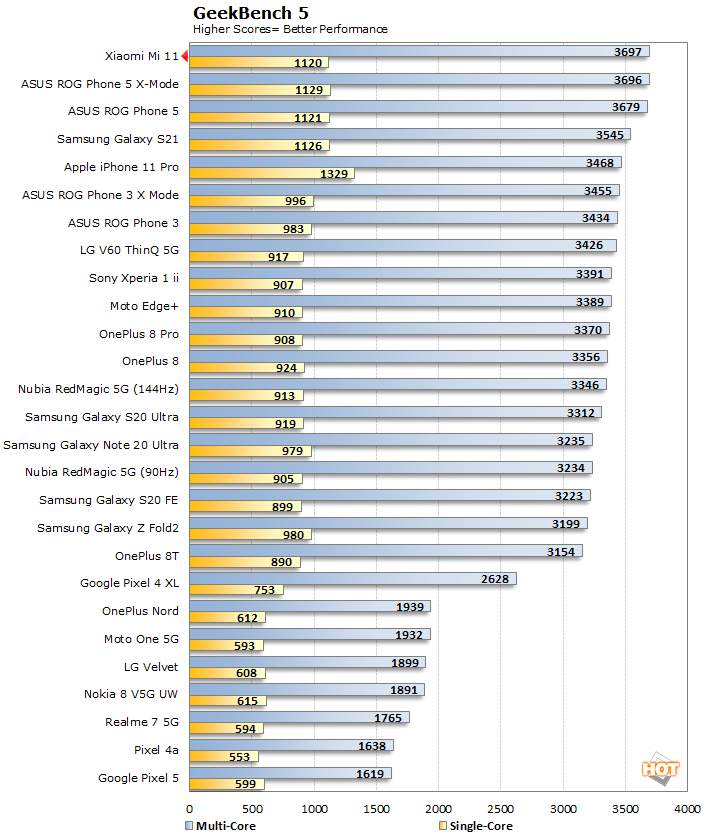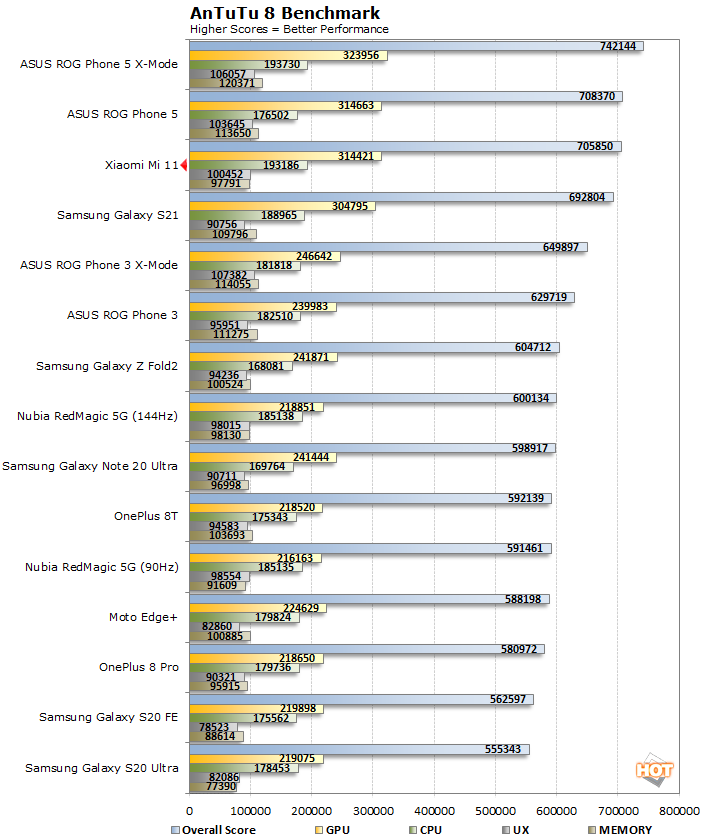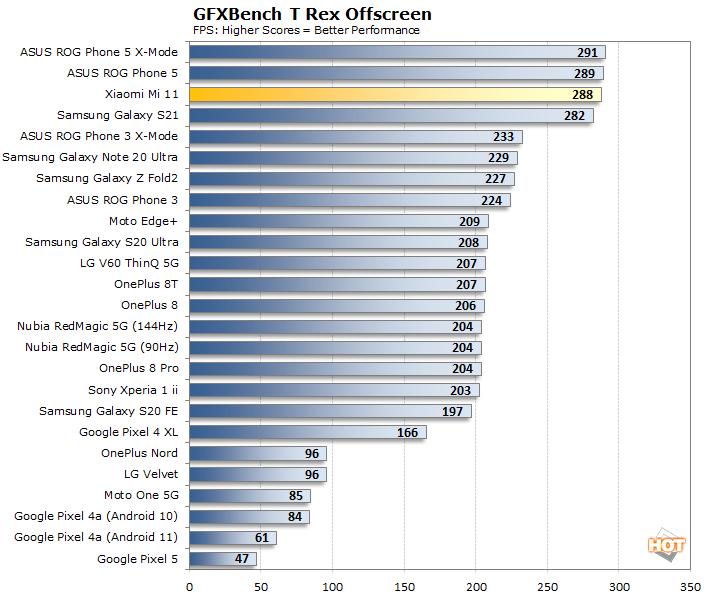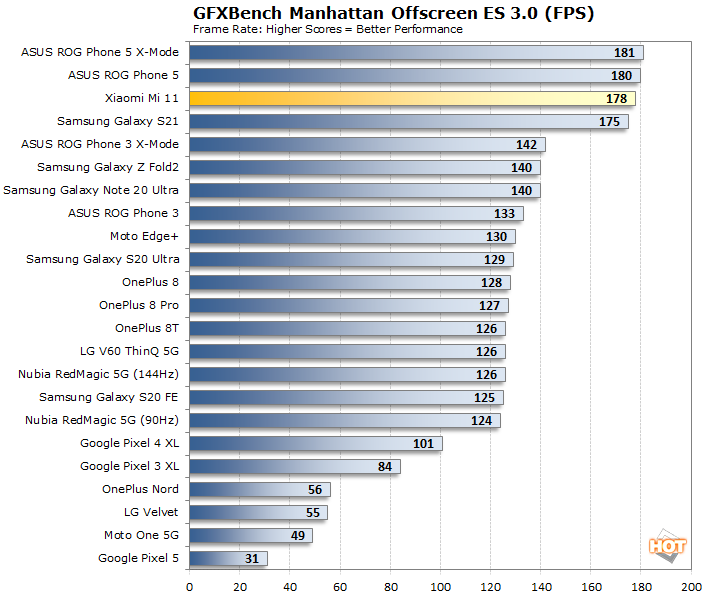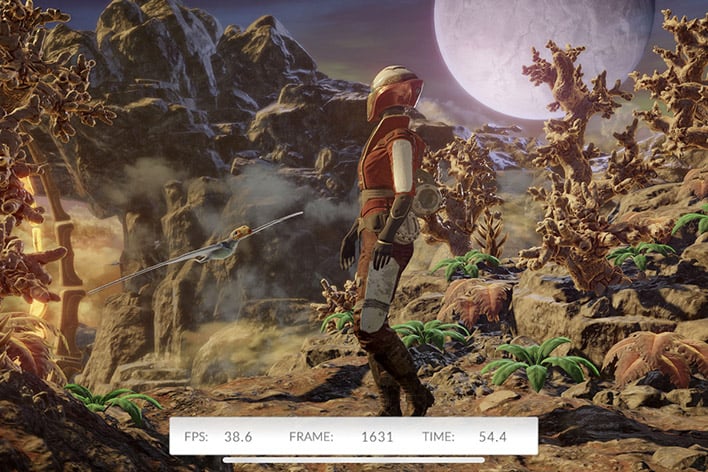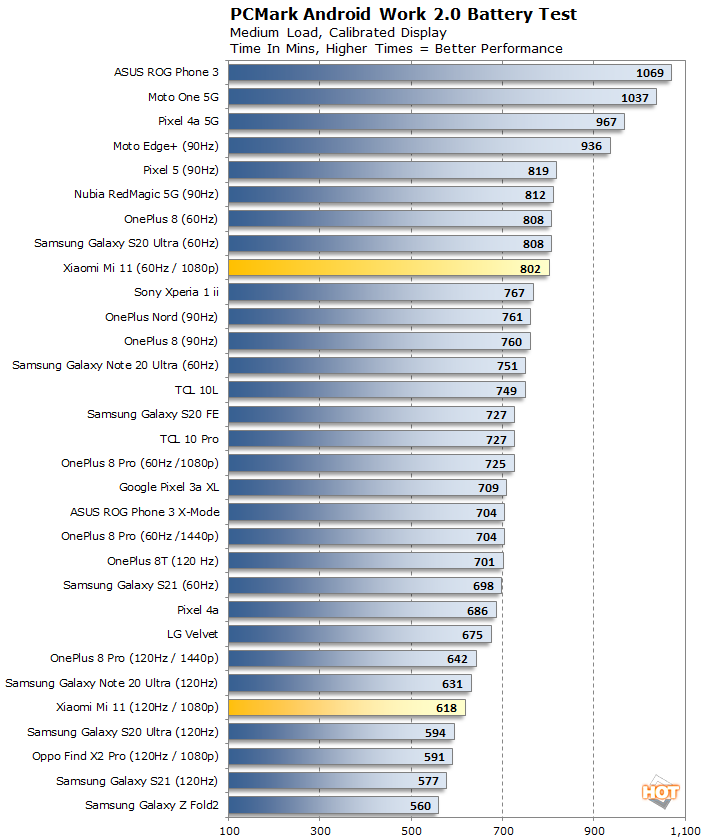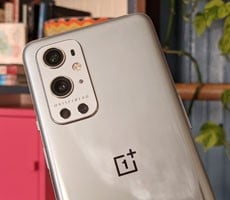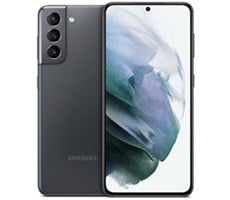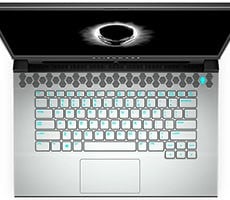We tested the Mi 11 on AT&T's and T-Mobile’s LTE networks in
San Francisco, CA and in Portland, OR, and didn’t experience any
problems with call quality or data speeds. Obviously, the Mi 11
supports 5G, but we were unable to connect to 5G despite sub-6GHz
bands n5 (850MHz, AT&T) and n41 (2.5GHz, T-Mobile) being
listed in the specs, and the 5G icon sometimes lighting up. In
addition, the Mi 11 didn’t work with our Verizon SIM.
Xiaomi Mi 11 Audio, Data, and Call Reception
The Mi 11’s stereo speakers -- tuned by Harman Kardon -- sound
fantastic. We feel that, along with the 2020 Moto G
Stylus and G Power, the Mi 11’s speakers are among the best we’ve
heard on a smartphone to date. As a bonus, the Mi 11 also packs a
24-bit 192KHz DAC, a quality amp, and supports both analog and
digital USB Type-C wired audio devices, plus LDAC and aptX HD
codecs for lossless audio over Bluetooth.
Xiaomi Mi 11 Performance
Between
Qualcomm’s flagship Snapdragon 888 silicon, that slick 120Hz display, and Xiaomi’s
optimized build of Android 11 (MIUI 12), the Mi 11 delivers
outstanding performance. Not only does it feel exceptionally
responsive, but it also tops our benchmarks --
ASUS ROG Phone 5
notwithstanding. But it’s the Mi 11’s sustained performance that’s
impressive. It shows none of the throttling we experienced with
Samsung’s Galaxy S21.
That Snapdragon 888 SoC is paired with 8 or 12GB of LPDDR5 RAM,
and 128 or 256GB of UFS 3.1 storage -- without microSD support, so
choose your storage option wisely. Needless to say, the Mi 11 ran
everything we threw at it like a champ -- from our day-to-day
productivity and entertainment apps, to the most graphically
intensive games. And while gaming handsets clearly serve a
purpose, the Mi 11 easily fulfills that role as well.
 |
| Geekbench
5 |
| Synthetic CPU Benchmark |
|
GeekBench isn't our favorite
benchmark, as it's purely synthetic and can be heavily targeted
for optimization. Regardless, the Mi 11 and its Snapdragon 888
processor deliver a noticeable improvement in single thread
performance and a marginal improvement in multi-threaded
performance over previous generation
Snapdragon 865-equipped
Android flagships. It also beats both the Galaxy S21 and ROG Phone 5 to take the top spot in multi-threaded performance.
 |
| Futuremark
PCMark For Android |
| General Purpose Pocket Computing
Performance Metrics |
|
Futuremark's PCMark for Android is
an excellent suite of tests if you want to benchmark a wide
range of tasks on any handset -- things like image and video
editing, as well as lighter-duty, everyday workloads such as
email and web browsing. When you see the test running live, it's
clear the scripted application tests are carefully selected and
tuned to make use of the each mobile platform in a very
controlled way...
Here the Mi 11 shows similar performance to previous generation
flagships, falling just behind the
Galaxy Note 20 Ultra. The Galaxy S21 performed better on this benchmark.
 |
| AnTuTu
8 |
| Platform Benchmarks |
|
AnTuTu’s latest benchmark returns a number of metrics
ranked with somewhat nebulous scores, rather than frame rates
or time to complete. Here we're running the latest version of
AnTuTu across multiple Android devices. AnTuTu returns four
top level performance results which are all included here:
CPU, RAM, 3D, UX (or User Experience), along with a total
score...
According to AnTuTu, the Mi 11
offers a significantly more substantial increase in performance vs.
previous generation Android handsets, beating the Galaxy S21 in all but the memory test, and coming very close to the ROG Phone 5.
 |
3D
Graphics Benchmarks: GFXBench and 3DMark Sling
Shot
|
| Pushing The Pixels |
|
Next we're checking how the Mi 11 compares in GFXBench, which has been one of the standard
mobile graphics/gaming performance benchmarks for years. To
ensure that display refresh (v-sync) and resolution aren't
limiting factors, we're comparing off-screen test results here.
GFXBench tests OpenGL ES graphics workloads and we're
specifically testing OpenGL ES 2...


Now we're seeing the kind of
performance improvement we expected from the Snapdragon
888-equipped Mi 11. This new phone clearly beats Snapdragon 865-powered devices, and even comes out ahead of Samsung's Galaxy S21.
Futuremark's 3DMark Sling Shot is a newer benchmark module
that's been added to the 3DMark mobile suite. Unlike previous
gen 3DMark mobile tests, Sling Shot is a much more advanced
OpenGL ES 3.1 and Metal API-based benchmark that employs more
advanced rendering techniques, like volumetric lighting,
particle illumination, multiple render targets, instanced
rendering, uniform buffers and transform feedback.
 3DMark Sling Shot Extreme Benchmark
3DMark Sling Shot Extreme Benchmark
We're running this test in off-screen mode once again to
remove display resolution differences from the equation.
This lets us compare cross-platform results more reliably...
Again here we see a more modest
improvement to the graphics score over Snapdragon 865-equipped flagships. Still, the Mi 11 performs extremely well in this test, beating the Galaxy S21 and almost matching the ROG Phone 5 in X-Mode.
 |
3D
Graphics Benchmarks: 3DMark Wild Life Stress
Test
|
Keeping It Cool
|
|
3DMark Wild Life is the latest
cross-platform test from UL. Its primary purpose is to measure GPU performance across
platforms, and two distinct tests are available. The
standard Wild Life test is designed to give feedback on how a
game performs over a short period of time. With mobile
games, people typically play in brief spurts when they find
some free time; be it on the bus, on the subway, or a quick
battle royale session over lunch break. The 3DMark
Wild Life Stress Test, on the other hand, shows how a device
performs over a longer stretch of time, and takes note of
performance degradation that might crop up due to increased
heat levels and throttling.


3DMark Wild Life is a significantly more taxing graphics
benchmark that employs cutting-edge mobile game engine
technologies to deliver impressive visuals -- as you can
see in the screen shot above. Here Xiaomi's Snapdragon 888-powered Mi 11 delivers
a massive improvement in performance versus some of the
fastest Snapdragon 865-equipped devices (Galaxy S20 Ultra and S20 FE), matching the ROG Phone 5.
The good news is that Mi 11 doesn't exhibit the excessive throttling we experienced with the Galaxy S21, managing a stability score of 90.5%. As such, it's an ideal smartphone for hard-core gamers.
Xiaomi Mi 11 Other Features and Battery Life
Looking at the rest of the specs, there’s sub-6GHz 5G (SA /
NSA), LTE, dual-band WiFi 6 (802.11ax), Bluetooth 5.2 (LE),
NFC, IR, and dual-band A-GPS / GLONASS / Galileo / BDS / QZSS
/ NavIC, plus the standard roster of sensors. The linear
vibration motor provides excellent haptics, but while the
optical in-display fingerprint scanner is pretty fast, it’s
less reliable than others we’ve used. Face unlock works fine,
though.
The Mi 11 uses a 4600mAh battery. Our PCMark battery test ran
for 10 hours and 18 minutes (1080p, 120Hz, 5G enabled), which
is adequate, but not spectacular. Lower the refresh rate and battery life increases to over 13 hours. Basically, a full charge
should last a day with moderate to heavy use for most people. The dual 2300mAh cell setup
enables 55W wired charging (with USB PD 3.0 and Quick Charge
4+ support) and 50W wireless charging (plus 10W reverse
wireless charging). Best of all, there’s a 55W charger in the
box.
Next up: the software, pricing, and the verdict...
